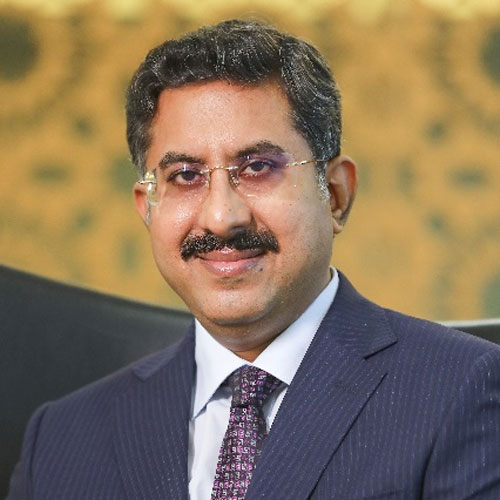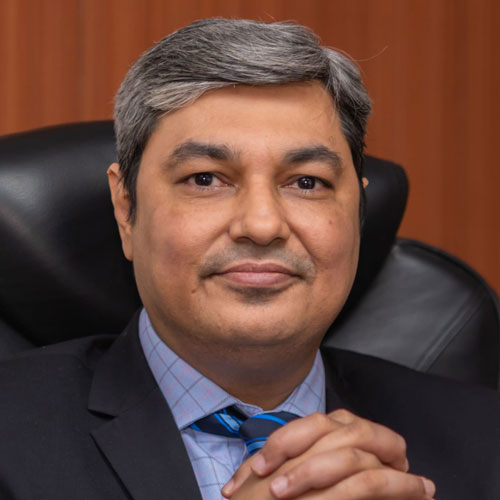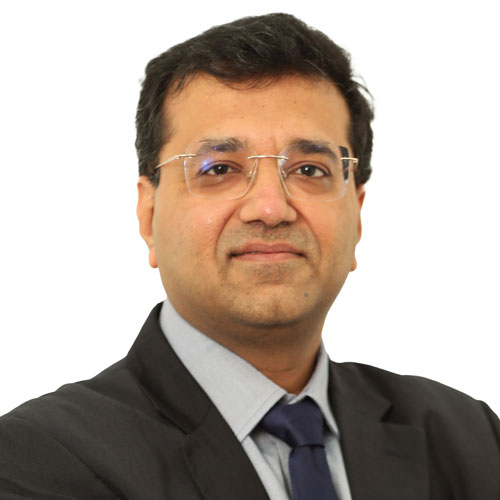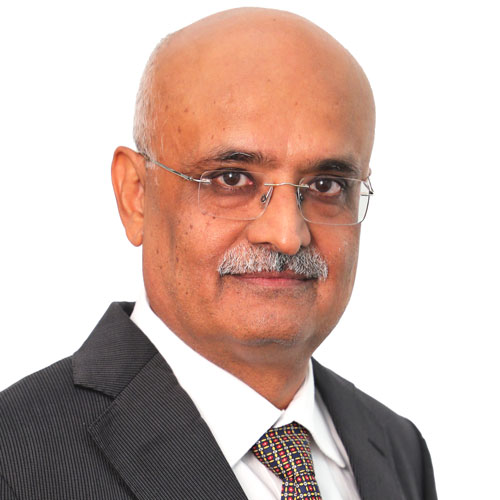Mr. Ajay Tyagi
Head - Equity, UTI Asset Management Company Limited
Ajay Tyagi is the Head of Equities at UTI Asset Management Ltd. He is a CFA Charter holder from The CFA Institute, USA and holds Master’s degree in Finance from Delhi University. Ajay joined UTI in the year 2000 and has successfully carried out various roles and responsibilities across equity research, offshore funds as well as domestic onshore funds. He has won many awards and accolades for his performance both domestically and globally. Ajay presently manages our flagship equity scheme in India and is also the Investment Advisor to UTI International’s range of India dedicated offshore funds.
Q1. Global markets have been experiencing a sustained sell-off, and commodities are leading the decline. How do you view the global economic situation? Do you think we’re in for a challenging second half of the year?
The global economy is facing a slowdown, with notable signs of weakening in growth in major economies. Developed market economies are witnessing a slowdown in growth with the US economy expected to moderate, if not enter a recession. Amongst the major emerging economies, China continues to report muted growth, and the anticipated economic recovery has yet to materialize. In an environment of lower global growth, demand for global commodities is likely to be under pressure, which is driving the moderation in commodity prices. Crude oil is a prime example of this phenomenon. Oil prices continue to face downwards pressure despite the OPEC+ group taking production cuts, diminishing the cartel’s ability to influence prices amidst expectations of moderation in demand.
Q2. Do you believe the current clampdown on speculative trading will affect market sentiment or momentum, or will the focus shift back to fundamentals next week?
Recent data shows a remarkable surge in futures and options (F&O) activity, with F&O transaction volumes now exceeding the nominal GDP of the country. For FY24, F&O turnover (premium) reached ₹481 trillion, compared to the projected nominal GDP of ₹362 trillion for FY25. To highlight the scale of this growth, the F&O turnover (notional) is about 368 times larger than the cash market volume and has surged nearly 48 times since FY2018.
This stark increase in speculative trading has been driven largely by rising retail participation over the past few years, prompting regulators to highlight this as a compelling concern. In response, the regulator has taken necessary steps to address the disproportionate growth of F&O volumes and retail participation. These steps, while prudent, may impact market sentiment in the short term. Participants heavily engaged in derivative trading may react to tighter restrictions, potentially causing temporary shifts in liquidity and pricing. Nevertheless, these steps should contribute to the long-term health and integrity of the financial markets. Over the long-term, investor behaviour and market’s direction shall be driven by the underlying growth in the economy and corporate earnings.
Q3. How do you evaluate the IPO market, given that many recent listings are yielding significant returns for investors? Do you detect any signs of froth or excessive enthusiasm at the moment? SEBI has expressed concerns regarding SME IPOs—what are your views on this?
At UTI, we adopt a bottom-up approach when evaluating IPOs. We focus on assessing individual companies based on their long-term fundamental outlook, rather than following broader market themes or narratives. Through this approach, we’ve identified a few IPOs over the past couple of years as attractive investment opportunities worthy of participating in, while we have let the others pass.
Recently, there has been heightened activity in the IPO market, both on the SME exchange and the main exchange. This surge reflects growing interest in new listings across various sectors, creating a dynamic environment for investors. However, we remain selective, guided by our commitment to fundamental analysis and long-term value.
Q4. It seems that conditions are favorable for a potential rate cut by the US Fed in the upcoming policy meeting. Could this signal a "risk-on" sentiment for equity markets?
Generally, interest rate cuts are viewed positively by the market, as they typically encourage investment and stimulate economic activity. However, this optimistic sentiment hinges on the future trajectory of the US economy. If the economy continues to grow, even at a lower rate, or even in case of a shallow recession, rate cuts may act as a supporting factor for equity markets. However, in case of a deep recession, the positive impact of rate cuts on market sentiment may not materialize as anticipated. In such a scenario, investors might remain cautious due to lingering concerns about economic stability, which could keep overall market sentiment negative despite the lower interest rates.
Q5. Foreign Institutional Investors (FIIs) withdrew approximately 15,000 crores from financial stocks in the first half of August and increased their exposure to defensive sectors such as healthcare, FMCG, and consumer services. What is your long-term outlook for the financial sector? Is it advisable for investors to invest now?
We have a positive view on the financial services sector, driven by expectations of continued financialization of savings in the country over the long-term. Rising financialization is expected to have a positive impact across various financial services, including insurance, asset management, wealth management, and broking. As households increasingly channel their savings into formal financial products, businesses in these segments should see significant growth. Additionally, India's credit market remains underpenetrated. We believe credit growth in the country should at least align with nominal GDP growth, if not higher, presenting a substantial long-term opportunity for financial institutions.
From a valuation perspective, the financial services sector is currently trading at or around its long-term averages, making it relatively attractive compared to other sectors in the market. This combination of growth potential and reasonable valuations reinforces our positive outlook on the sector.
Q6. Do you think the recent market uptrend over the past couple of months is primarily due to inflows, or do you believe it is supported by strong fundamentals? Q1 earnings were relatively weak. It appears that SIP flows and mutual fund investments might be fueling the market.
The fundamentals of the Indian economy remain robust, and we continue to anticipate strong growth over the coming decade. Key drivers such as demographic advantages, increasing urbanization, and structural reforms should sustain India’s long-term growth trajectory. However, it's important to note that current market valuations are higher than their long-term averages driven by the re-rating of several companies witnessing a cyclical upswing in growth. In certain cases, valuations have moved ahead of the underlying fundamentals. While this may create short-term price fluctuations, the robust economic outlook provides a strong foundation for long-term growth.
Source: Media reports, Bloomberg, SEBI
The views expressed are the author’s own views and not necessarily those of UTI Asset Management Company Limited. The views are not investment advice and investors should obtain their own independent advice before taking a decision to invest in any asset class or instrument.
Mutual Fund Investments are subject to market risks, read all scheme related documents carefully.







